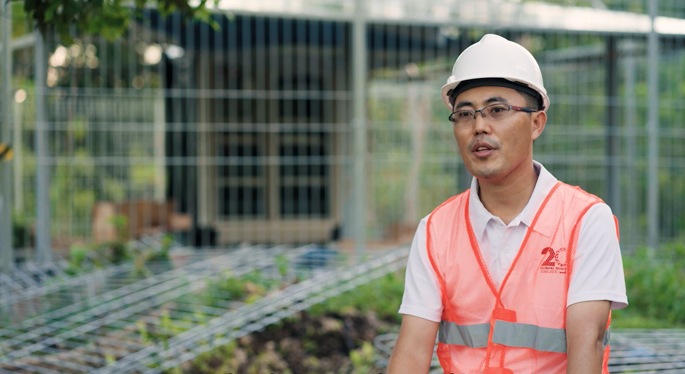You could say that Yubin “Sam” Jiang calls Indonesia home. Huawei’s delivery and service team leader has been living in the country since 2010. And 12 years later, he’s still having fun providing connectivity to remote locations. It’s priceless to see the gratitude in the eyes of villagers who realize they won’t have to travel for hours by boat to get a signal, he reports.
It is in Papua, in the east of the country, that he recently worked. “There are so many villages and children in Papua,” he says. “But the island has no signal coverage.”
A Papuan wet market
Like everywhere else in the world, Papuans expect telephone connectivity. Life is hard enough in the area without having to spend hours finding a way to connect with a relative in another city, a potential employer or client, or a better school your kids could attend.
“Nature has given Papuans a beautiful landscape, but also created many difficulties for the region,” says Jiang Jiang.

Papuan province: spectacular geography, but difficult place to install wireless networks
To install wireless telecommunications infrastructure, Jiang and his team must cross dangerous seas to reach remote islands. Once ashore, gravel roads, where they exist, are systematically washed away by the rains, forcing SUVs carrying Huawei equipment to cross muddy tools in which they sometimes get stuck. And then the last few miles to reach a suitable wireless tower site may have to be done on foot, carrying heavy equipment.
However, setting up wireless networks is easier than the alternative of having fixed fiber optic lines. “Mobile Internet is the most suitable technology in this field,” Jiang said. “Compared to a fixed network, 4G mobile is much cheaper in terms of equipment and maintenance.”

Sam Jiang
Despite the frequent difficulties, Jiang does not lose sight of how essential his successful performance is for the Papuans. The province, he says, is home to large families. “We need to bridge the digital divide for the future, for the children,” he says. “We must do more for them, for their education and development.”
Connectivity plays a fundamental role in promoting development throughout Indonesia. The national government has a policy of providing everyone in the vast archipelago of 17,500 islands with a decent connection no matter where they live. Huawei is working hard with its local partners to make this ambitious vision a reality.

Towers must be higher than the surrounding jungle
Huawei has developed a wide range of products, technologies and know-how to provide connectivity to the tens of millions of people around the world who are still unconnected. This includes low cost antennas; solar energy, batteries and energy management systems; and a wide range of microwave links that can reach isolated communities.
Solutions can be basic and very affordable, or more sophisticated, depending on local needs. Huawei’s highly cost-effective RuralStar solution represents a complete overhaul of base station design. RuralStar is made up of robust but simple telecommunications components. The kit requires so little energy to operate that a few solar panels are enough. More complex “butterfly sites” are installed on taller antenna towers. They can usually provide network coverage on multiple frequency bands and can serve a wider territory due to their height.
Watch Sam Jiang’s story below. And join us on November 23 for our sustainability event Connectivity+: innovating to have an impact where you can learn how connectivity is advancing in isolated communities around the world.



